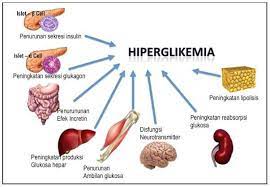Distal Ureter Atresia Representing As Megaureter And Kidney Hypoplasia In 10 Years Male: A Rare Case Report
Downloads
Introduction: Ureteral atresia is a very rare congenital disorder and therefore its incidence is not known for sure. This congenital disorder is usually often accompanied by renal dysplasia and non-functioning kidneys. Ureteral atresia is associated with ischemia during the ongoing kidney's migration resulting in a decrease in blood supply to the ureters. Ureteral atresia can be bilateral or unilateral and can be in any part of the ureter with the most frequent occurrence being in the distal part. Case Presentation: A 9-year-old boy with progressive enlarged abdominal complaints from birth. There was no disturbance in the pattern of urination and defecation. On physical examination, vital signs were found within normal limits, weight 30 kg. On the abdominal examination, the mass was found to resemble the contour of the intestine, intestinal noise within normal limits, palpable soft mass measuring 6x19 cm, the mass could be moved and there was no pressure pain. Routine blood tests within normal limits. Abdomen CT scan examination with contrast, dilation and turtoise of 1/3 proximal to 1/3 distal left ureter that appears to press the left to posterior renal leads to the picture of the left megaureter, and is diagnosed with left renal hypoplasia. Internal pyelography examination found that there was no contrast reflux filling the bilateral ureter to bilateral pelviokalises. The patient was operated on with a lumbottomy design and was fitted with a megaureter that resembles a cystic period and the proximal part of the ureter obtained left renal hypoplasia, in the distal part was obtained distal ureteral atresia which did not drain into the urinary vesicles. Then a left nephroureterectomy was performed. The results of histopathological examination showed a picture of renal hypoplasia. The operation showed quite satisfactory results and there were no complications. Conclusion: Ureteral atresia is a sufficient congenital disorder Step there is no definitive data on the incidence of this event. Ureteral atresia has no typical symptoms. Cases of ureteral atresia are usually accompanied by kidney abnormalities such as dysplasia/hypoplasia. The management of ureteral atresia cases is quite diverse, depending on the anatomical abnormalities found.
Copyright (c) 2025 Dauri Prayogo, Indrianto Wiryo Pranoto, Setya Anton Tusara Wardaya

This work is licensed under a Creative Commons Attribution 4.0 International License.











